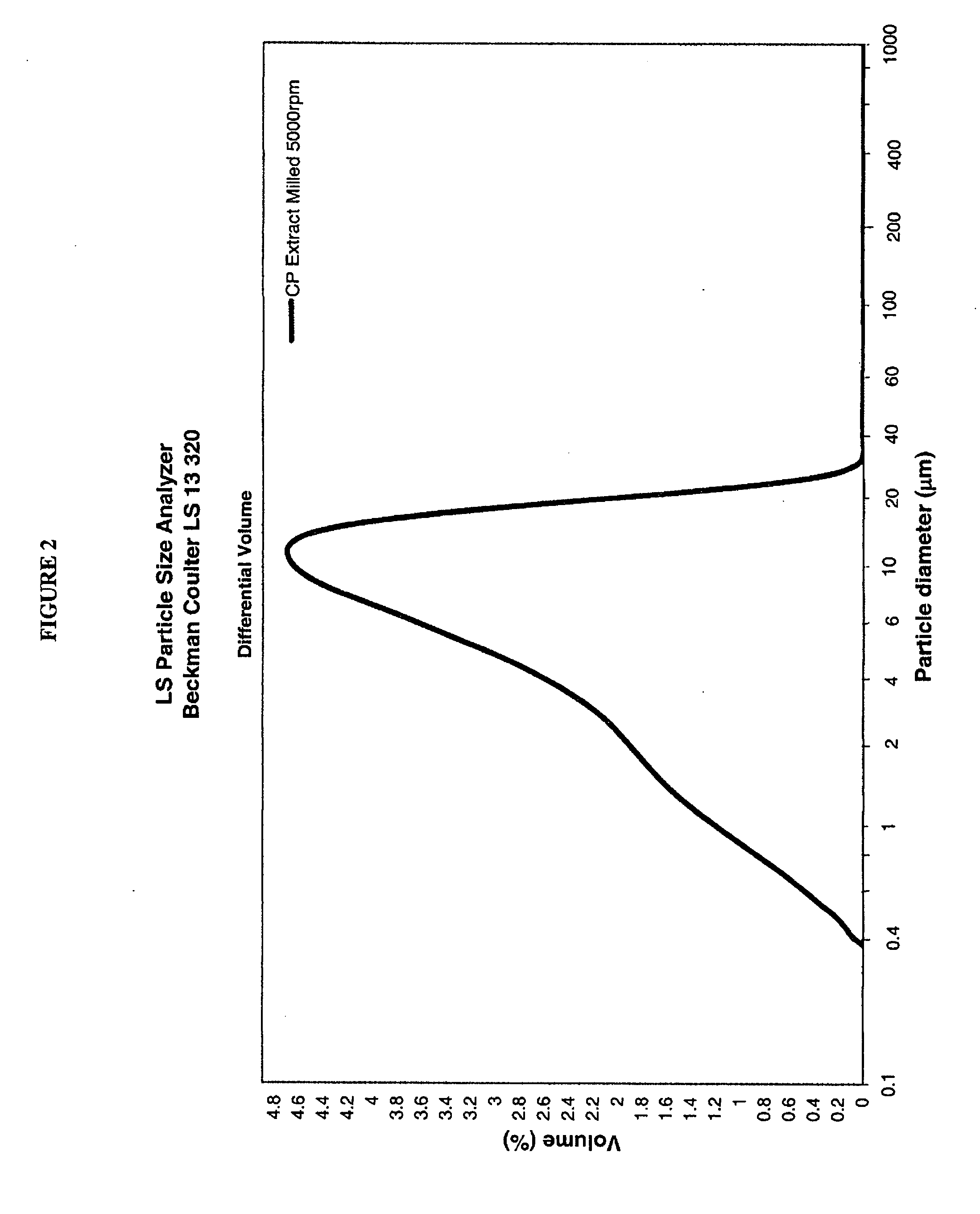Edible Products Having A High Cocoa Polyphenol Content and Improved Flavor and The Milled Cocoa Extracts Used Therein
a technology of cocoa polyphenols and edible products, which is applied in the field of cocoa extracts, can solve the problems of complex changes and significant reduction of the concentration of cocoa polyphenols in fermented cocoa beans, and achieve the effects of less astringency, less bitterness and improved flavor
- Summary
- Abstract
- Description
- Claims
- Application Information
AI Technical Summary
Benefits of technology
Problems solved by technology
Method used
Image
Examples
example 1
Cocoa Bean Source and Method of Preparation
[0089]Harvested cocoa pods were opened and the beans with pulp were removed for freeze drying. The pulp was manually removed from the freeze-dried mass. The unfermented freeze-dried cocoa beans were manually dehulled and ground to a find powdery mass with a TEKMAR Mill. The resultant mass was then defatted overnight by Soxhlet extraction using distilled hexane as the solvent. Residual solvent was removed from the defatted mass by vacuum at ambient temperature.
example 2
Extraction of Cocoa Polyphenols from Defatted Cocoa Mass
[0090]Cocoa polyphenols were extracted using a modification of the method described by Jalal and Collin (1977). Fifty gram batches of the defatted cocoa mass from Example 1 were extracted twice with 400 mL of 70% acetone / deionized water and extracted twice with 400 mL of dichloromethane (CHCl3). The solvent phase was discarded. The aqueous phase was then extracted four times with 500 mL of ethyl acetate. Any resultant emulsions were broken by centrifugation on a Sorvall RC 28S centrifuge operated at 2,000×g for 30 minutes at 10° C. To the combined ethyl acetate extracts, 100 to 200 mL deionized water were added. The solvent was removed by evaporation at 45° C. with a rotary evaporator held under partial vacuum. The resultant aqueous phase was frozen in liquid nitrogen (N2) followed by freeze drying on a LABCONCO Freeze Dry System.
example 3
Preparation of High CP Partially Defatted Cocoa Solids
[0091]Commercially available cocoa beans having an initial moisture content of about 7 to 8% by weight were pre-cleaned in a scalperator. The pre-cleaned beans were further cleaned in an air fluidized bed density separator. The cleaned beans were then passed through an infra-red heating apparatus. The depth of the beans in the vibrating bed of the apparatus was about 2-3 beans deep. The surface temperature of the apparatus was set at about 165° C., thereby producing an internal bean temperature (IBT) of about 135° C. in a time ranging from 1 to 1.5 minutes. This treatment caused the shells to dry rapidly and separate from the cocoa nibs. The broken pieces separated by the vibrating screen were reintroduced into the product stream prior to the winnowing step. The resulting beans after micronizing should have a moisture content of about 3.9% by weight. The beans emerged at an IBT of about 135° C. and were immediately cooled to abou...
PUM
| Property | Measurement | Unit |
|---|---|---|
| mean particle size | aaaaa | aaaaa |
| mean particle size | aaaaa | aaaaa |
| mean particle size | aaaaa | aaaaa |
Abstract
Description
Claims
Application Information
 Login to View More
Login to View More - R&D
- Intellectual Property
- Life Sciences
- Materials
- Tech Scout
- Unparalleled Data Quality
- Higher Quality Content
- 60% Fewer Hallucinations
Browse by: Latest US Patents, China's latest patents, Technical Efficacy Thesaurus, Application Domain, Technology Topic, Popular Technical Reports.
© 2025 PatSnap. All rights reserved.Legal|Privacy policy|Modern Slavery Act Transparency Statement|Sitemap|About US| Contact US: help@patsnap.com



